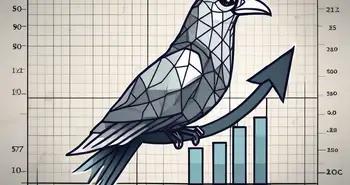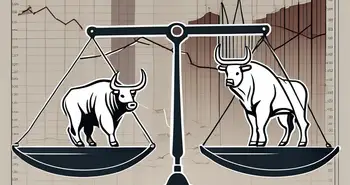Maximizing Profits with a Bull Call Spread

As a seasoned trader in the world of options, I am always on the lookout for innovative strategies that can help me maximize profits. One such strategy that has caught my attention over the years is the Bull Call Spread. In this article, I will guide you through the basics of a Bull Call Spread, explain its profit potential, discuss how to construct one, and highlight the risks and limitations involved. By the end, you'll have a clear understanding of how this strategy can help you achieve your investment goals.
Understanding the Basics of a Bull Call Spread
Let's start by defining what a Bull Call Spread actually is. Put simply, it's a limited-risk, limited-reward option strategy that enables investors to profit from a modest rise in the price of an underlying stock. It consists of buying a call option at a lower strike price and simultaneously selling a call option at a higher strike price. The goal is to capitalize on the price of the stock moving upward, while also mitigating potential losses.
Now that we have the definition out of the way, let's explore the key components of a Bull Call Spread.
Definition and Function of a Bull Call Spread
A Bull Call Spread involves the purchase of a lower strike call option and the simultaneous sale of a higher strike call option. This combination allows the trader to profit from both the increase in the underlying stock's price and the time decay of the options. By buying a call option at a lower strike price, the trader gains the right to buy the stock at a predetermined price, known as the strike price. On the other hand, selling a call option at a higher strike price generates income for the trader, but also limits their potential profit if the stock price exceeds the higher strike price.
Key Components of a Bull Call Spread
The two key components of a Bull Call Spread are the lower strike call option and the higher strike call option. The lower strike call option serves as a hedge against potential losses, while the higher strike call option acts as a source of income. It's important to strike a balance between the strike prices to maximize profits while managing risk effectively. Additionally, the trader must consider the overall market conditions, as well as the volatility of the underlying stock.
The Profit Potential of a Bull Call Spread
Now that we understand the basics of a Bull Call Spread, let's dive into the profit potential it offers.
Calculating Potential Profits
The profit potential of a Bull Call Spread can be calculated by subtracting the cost of establishing the spread from the difference between the two strike prices. The maximum profit occurs when the stock price is higher than the higher strike price at expiration. At this point, both the lower strike call option and the higher strike call option will be in the money, resulting in the maximum profit for the trader. However, it's important to remember that the maximum profit is limited, as the trader has already sold a call option at the higher strike price.
Factors Influencing Profitability
Several factors can influence the profitability of a Bull Call Spread. The most significant factors include the stock price at expiration, the time remaining until expiration, and the volatility of the underlying stock. The ideal scenario is for the stock price to settle just above the higher strike price at expiration, as this maximizes the profit potential. It's also essential to closely monitor the time decay of the options, as this can erode profits if the stock price remains stagnant.
Constructing a Bull Call Spread
Now that we have a good grasp of the profit potential, let's discuss how to construct a Bull Call Spread.
Choosing the Right Stocks
When selecting stocks for a Bull Call Spread, it's important to look for those that have a moderate level of volatility and a positive outlook. Stocks with low volatility may not offer sufficient price movement to generate substantial profits, while highly volatile stocks can increase the risk of losing money. Conduct thorough research, analyze the fundamentals of the company, and consider any upcoming events or catalysts that may impact the stock price.
Determining Strike Prices
The choice of strike prices is crucial in determining the success of a Bull Call Spread. The lower strike call option should be selected based on the desired level of downside protection, while the higher strike call option should generate sufficient income while limiting the potential profit. Strike prices should be determined by considering the current stock price, price targets, and the trader's risk tolerance. It's recommended to strike a balance between risk and reward to achieve the desired outcome.
Setting Expiration Dates
Expiration dates play a significant role in a Bull Call Spread. It's important to choose an expiration date that allows sufficient time for the stock price to move in the desired direction. Longer expiration periods provide greater room for the stock to fluctuate, increasing the chances of attaining a profitable outcome. However, keep in mind that longer expiration periods also come with higher premium costs, so strike a balance based on your investment goals and risk appetite.
Risks and Limitations of a Bull Call Spread
While a Bull Call Spread offers attractive profit potential, it's vital to understand the risks and limitations involved.
Understanding the Risks
The main risk associated with a Bull Call Spread is the possibility of the underlying stock price falling. If the stock price drops below the lower strike price, the lower strike call option will expire worthless, resulting in a loss for the trader. Additionally, if the stock price remains stagnant, time decay can erode the value of the options, reducing potential profits. It's crucial to carefully manage the risks by using appropriate position sizing and implementing stop-loss orders if necessary.
Mitigating Potential Losses
To mitigate potential losses in a Bull Call Spread, it's important to monitor the position closely and take appropriate action when needed. Consider implementing a stop-loss order to automatically exit the trade if the stock price moves against your expectations. Additionally, ongoing analysis of the underlying stock and market conditions can help identify potential risks and adjust the position accordingly.
Strategic Considerations for Bull Call Spreads
Now that we have covered the basics, let's explore some strategic considerations when using Bull Call Spreads.
Market Conditions and Timing
Market conditions and timing play a crucial role in the success of a Bull Call Spread. It's essential to analyze the overall market trends, sector performance, and any upcoming events that may impact the stock price. Additionally, timing your entry and exit points can significantly impact your profitability. Patience and discipline are key when it comes to executing Bull Call Spreads effectively.
Portfolio Integration and Diversification
When incorporating Bull Call Spreads into your portfolio, it's important to consider diversification. A well-diversified portfolio spreads the risk across different asset classes, sectors, and strategies. By diversifying your portfolio, you can reduce the impact of any potential losses from a single trade and increase the overall stability and potential returns.
Now that we have explored the intricacies of a Bull Call Spread, I want to share a personal anecdote that illustrates the power of this strategy. A few years ago, I was closely monitoring a stock with a positive outlook and decided to establish a Bull Call Spread. The stock price started moving in the desired direction, and after careful analysis, I decided to adjust the position by rolling up the higher strike call option. This adjustment not only allowed me to lock in a higher potential profit but also reduced the overall risk. When the stock price reached my price target, I exited the trade with a substantial profit.
Frequently Asked Questions
Q: What is a Bull Call Spread?
A: A Bull Call Spread is an option strategy that involves buying a call option at a lower strike price and simultaneously selling a call option at a higher strike price. It allows investors to profit from a modest rise in the price of an underlying stock while limiting potential losses.
Q: How do I calculate the potential profit of a Bull Call Spread?
A: The potential profit of a Bull Call Spread can be calculated by subtracting the cost of establishing the spread from the difference between the two strike prices.
Q: What factors influence the profitability of a Bull Call Spread?
A: The profitability of a Bull Call Spread is influenced by the stock price at expiration, the time remaining until expiration, and the volatility of the underlying stock.
Q: What are the risks associated with a Bull Call Spread?
A: The main risks associated with a Bull Call Spread include the stock price falling below the lower strike price and time decay eroding the value of the options.
Q: How can I mitigate potential losses in a Bull Call Spread?
A: To mitigate potential losses, carefully manage position sizing, implement stop-loss orders, and regularly monitor the underlying stock and market conditions. Taking appropriate action when needed can help limit potential losses.
Q: Are Bull Call Spreads suitable for all investors?
A: Bull Call Spreads are more suitable for investors with a moderate risk appetite and an understanding of options strategies. It's important to thoroughly assess your risk tolerance and investment goals before considering this strategy.
Now that you are armed with the knowledge and understanding of Bull Call Spreads, I encourage you to carefully analyze the market, select suitable stocks, and consider incorporating this strategy into your trading arsenal. Remember, success in trading requires a combination of skill, discipline, and continuous learning. Good luck on your trading journey!
Ready to put your knowledge of Bull Call Spreads into action? Look no further than Morpher, the innovative trading platform that empowers you to trade with zero fees and infinite liquidity. Whether you're interested in stocks, cryptocurrencies, or even niche markets, Morpher's blockchain technology offers fractional investing, short selling, and up to 10x leverage to enhance your trading strategy. Plus, with the Morpher Wallet, you'll enjoy unparalleled safety and control over your investments. Take advantage of Morpher's unique trading experience today. Sign Up and Get Your Free Sign Up Bonus to start maximizing your profits with the flexibility and tools you deserve.

Disclaimer: All investments involve risk, and the past performance of a security, industry, sector, market, financial product, trading strategy, or individual’s trading does not guarantee future results or returns. Investors are fully responsible for any investment decisions they make. Such decisions should be based solely on an evaluation of their financial circumstances, investment objectives, risk tolerance, and liquidity needs. This post does not constitute investment advice.

Painless trading for everyone
Hundreds of markets all in one place - Apple, Bitcoin, Gold, Watches, NFTs, Sneakers and so much more.

Painless trading for everyone
Hundreds of markets all in one place - Apple, Bitcoin, Gold, Watches, NFTs, Sneakers and so much more.









